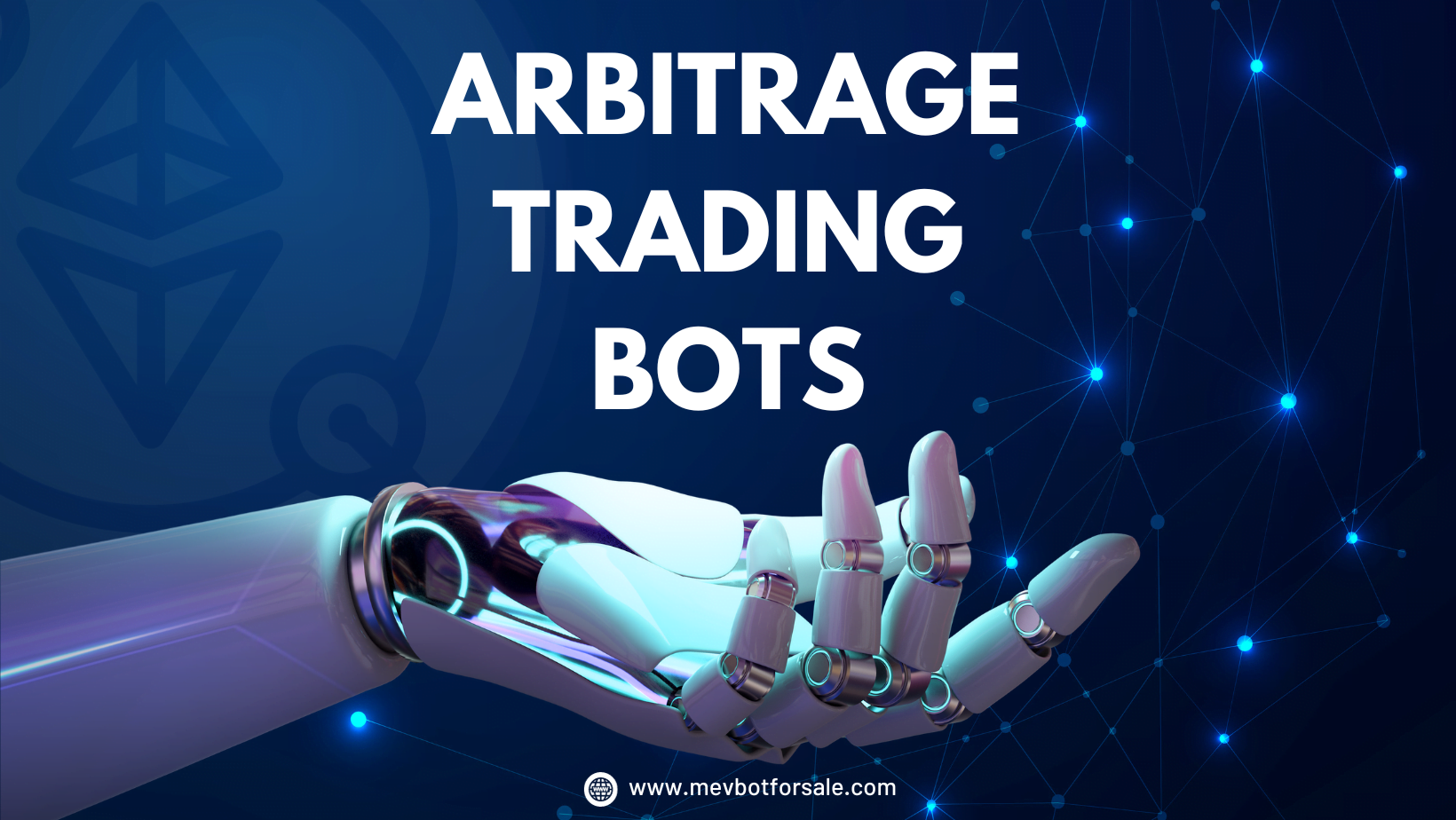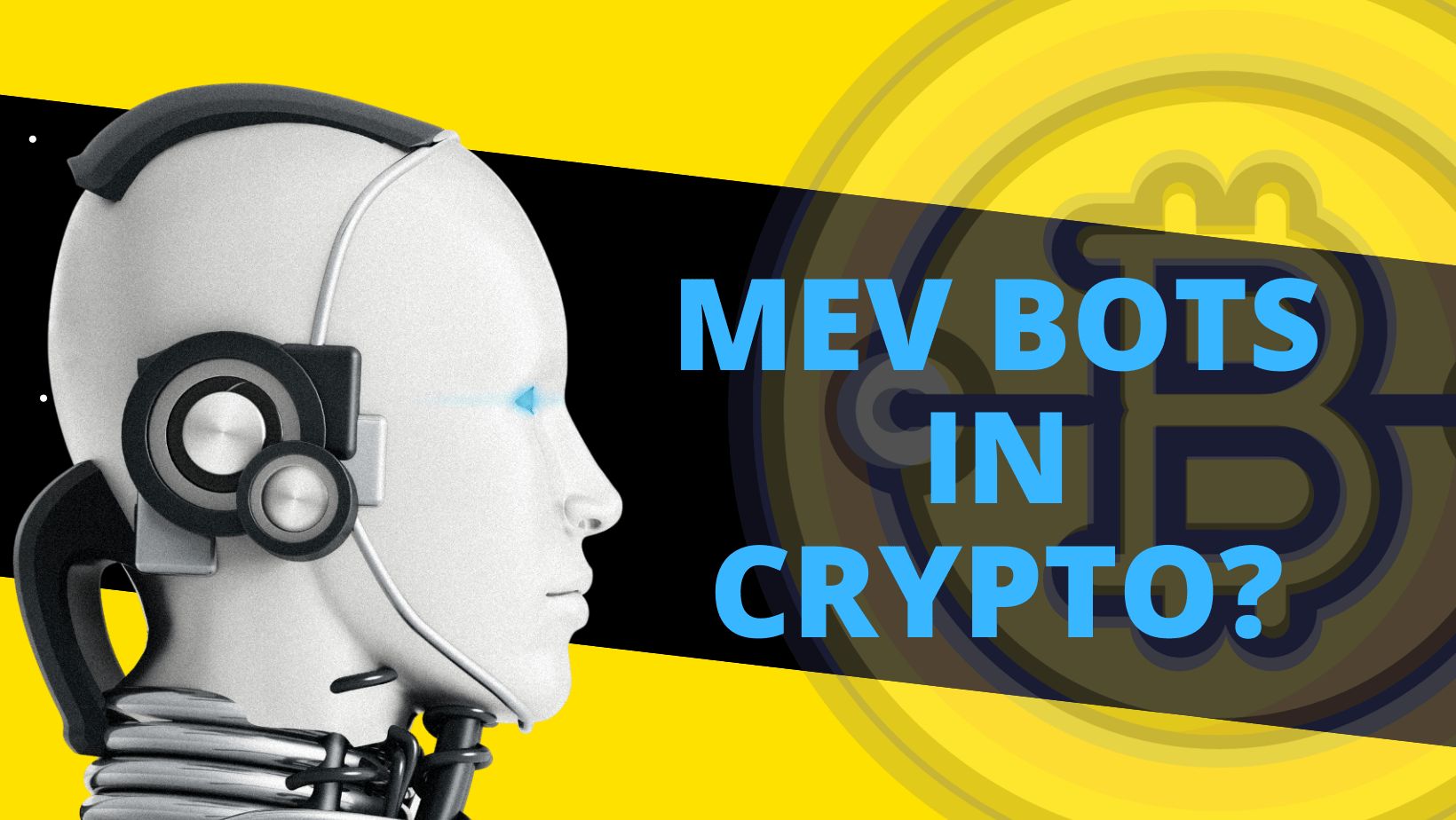table of contents
Imagine a chess game where every move is meticulously analyzed for potential profit – welcome to the world of MEV bots.
In this high-stakes environment, even a split-second delay can result in missing out on thousands of dollars.
As traders engage in a relentless race to outmaneuver each other using these automated strategies, the distinction between fair play and manipulation often needs to be clarified.
Understanding MEV Bots
MEV stands for “Miner Extractable Value,” at its core, MEV bots are automated systems that search for opportunities within blockchain transactions to earn profits. These bots monitor the mempool, a sort of waiting area for transactions before they’re confirmed, detecting transactions that can be potentially exploited for gain. Through “frontrunning” or “back-running,” MEV bots capitalize on their knowledge of pending transactions to execute their own trades first, often at the expense of regular users.
These bots have created a complex ecosystem that fuels a latent form of competition known as the “priority gas auction”, or PGA. Here, MEV bots outbid each other by paying higher gas fees to miners for the privilege of having their transactions included sooner in the blockchain—a contest where victory is measured in milliseconds and the spoils are arbitrage profits, liquidation opportunities, or advantageous trade positions. In this digital battleground, having the fastest and most strategic bot can differentiate between substantial profits and costly failures.
Defining Maximal Extractable Value
Maximal Extractable Value (MEV) encapsulates the potential profit from on-chain transaction ordering and reordering.
MEV discovery can lead to altered blockchain miner behavior, fostering a complex economy around transaction prioritization.
Understanding MEV requires grasping how bots detect and leverage arbitrage, liquidations, and trade sandwiching, extracting value that eludes typical users.
MEV has critical implications for consensus security—propelling miners towards preferential transaction orderings and potentially destabilizing network fairness.
How MEV Bots Operate
MEV bots constantly monitor the transaction pool, or ‘mempool’, for profitable opportunities that arise within it. Through advanced algorithms, these bots detect sequences of transactions that can be exploited for value extraction.
In the fast-paced realm of blockchains, MEV bots employ high-speed data analysis to predict and intercept transactions. They insert their transactions with precisely calibrated gas fees to outcompete others for block inclusion, ensuring their trades are executed first.
MEV bots might also engage in ‘frontrunning’ by placing a transaction with a higher gas price ahead of a detected large trade. They aim to benefit from the price movement caused by the large trade’s market impact, selling the asset for a profit afterward.
Bots can manipulate transaction ordering within a block, a tactic known as ‘back running.’ By positioning their transaction immediately after a large trade, they capitalize on the expected favorable price shift that follows the initial trade.
Profiting from MEV often involves complex strategies that combine frontrunning, backrunning, and other techniques, making MEV bots an elite tool in the crypto traders’ arsenal. Their operations significantly influence market dynamics and blockchain network performance.
The Role of Bots in DeFi
Automated bots in DeFi are omnipresent, performing many tasks across decentralized exchanges and lending platforms.
- Arbitrage: Executing trades that capitalize on price discrepancies across different exchanges.
- Liquidation: Identifying and liquidating undercollateralized loans.
- Frontrunning: Detecting and exploiting large pending transactions by getting ahead of them.
- Backrunning: Taking advantage of the effects of a transaction by following it.
- Sandwich attacks: Insert transactions before and after a target transaction to profit from the resulting price movement.
These bots are programmed to act precisely, quickly, and without fatigue or emotion.
By exploiting inefficiencies, bots contribute to DeFi’s liquidity and market efficiency but add layers of complexity and potential for manipulation.
Mechanisms of MEV Exploitation
MEV exploitation hinges on identifying opportunities to extract value from the ordering of transactions within a blockchain block. Bots leverage algorithmic celerity to anticipate, execute, and exploit arbitrage opportunities, liquidations, and slippage before human users can react. Through tactical positioning in the mempool, these bots facilitate or obstruct transaction confirmations in anticipation of profit.
Such strategies necessitate subversive tactics, ranging from the benign, such as gas price auctions for block space, to the more malign, such as transaction reordering or insertion. Bots adeptly maneuver within the complex topology of blockchain protocols, dynamically responding to market conditions to maximize their yield from the ecosystems they navigate.
Frontrunning Transactions
Frontrunning in crypto is a contentious strategy where traders capitalize on unconfirmed transactions in the mempool.
- Bots monitor the pending transactions queue for sizable trades that could impact asset prices.
- They execute buy or sell orders on the same asset but with higher gas fees to get their transactions confirmed first.
- After the price movements resulting from the initially spotted transaction are realized, profits are later realized by selling the assets.
- Such actions can lead to slippage for the initial trader’s transaction, adversely affecting their trade outcome.
- Duplicitous MEV bots engage in these tactics, exploiting the transparent nature of blockchain technology.
These strategies produce a predatory trading environment, making it challenging for regular users to compete.
In sum, frontrunning distorts market integrity by allowing bots to gain an unfair advantage through superior speed and computational resources.
Back-Running Strategies
Back-running, contrastingly, seeks opportunities following confirmed transactions. MEV bots exploit a sizable transaction’s effect on the network by positioning their trades to occur immediately afterward.
Hinging on complex algorithms, these mechanisms identify a trigger — typically a large transaction or a series of transactions — that predictably influences the market. The bots then place their trades, usually with slightly lower gas prices, to sequence their transactions directly behind the identified movements. This strategy capitalizes on price shifts induced by the initial transactions, enabling the bots to benefit from the market activity.
These operations leverage the immutable and transparent nature of the blockchain. When a large transaction is confirmed, it can sometimes lead to temporary inefficiencies in market price as liquidity adjusts. MEV bots that back-run these transactions are adept at exploiting the short window during which these inefficiencies present a profitable opportunity.
While back-running does not disrupt the original transaction’s confirmation, it can still have market-wide implications. The bots’ subsequent transactions contribute to volatility and affect market dynamics, potentially impacting prices beyond their targeted advantage. Understanding these strategies underscores the complexity of the trading landscape and exemplifies the need for continuous evolution of market protective measures.
Sandwich Attacks Explained
Sandwich attacks are a pertinent form of MEV strategy.
In a sandwich attack, an MEV bot places two orders around a large, pending transaction from an unsuspecting user. Capitalizing on the transparent nature of the blockchain, the bot detects a profitable trade and positions its own orders to buy the asset before the large transaction and sell it afterward. Consequently, they manipulate the asset’s price to their advantage at the expense of the regular user.
This strategy relies on the predictability of the large transaction’s market impact.
They execute their trade precisely – first, increasing the price by buying the asset.
Then, they sell the asset immediately after the initial transaction, often resulting in a better sell price due to the market influence of the large transaction. This is not without risks – if the market doesn’t react as expected or if another bot outmaneuvers them, the MEV bot might incur a loss.
The potential of sandwich attacks in disrupting the trading equilibrium has expedited the adoption of preventative measures, including implementing fair sequencing services and modified trade matching algorithms by some exchanges. As of early 2023, these countermeasures remain critical in maintaining market integrity and protecting participants from predatory strategies.
Ethical and Technical Concerns
The emergence of MEV bots presents a dual-edged sword, raising ethical and technical concerns globally. From an ethical standpoint, these bots underscore a contentious debate on market fairness, as they harness information and execution speeds unattainable by average traders. Technically, the proliferation of MEV bots strains blockchain networks and challenges consensus mechanisms, potentially compromising network stability and performance. These technical vulnerabilities may lead to uncertain transaction finality and skewed block validation processes. The very heart of decentralization is at stake when MEV strategies take advantage of a select few, raising questions about equitability and the long-term health of cryptocurrency ecosystems.
Impact on Blockchain Fairness
MEV bots have introduced new complexities into blockchain ecosystems, skewing the notion of fairness and benefiting a technologically privileged minority. Their operations can widen existing inequalities, creating an uneven playing field that disadvantages regular users.
This disparity affects trust in decentralized systems, which tout neutrality as a core principle. Traditional finance systems are already scrutinized for favoring institutional participants, and now, similar criticisms are levied against blockchains infiltrated by MEV exploitation.
MEV bots, by design, prioritize profit over protocol fairness, disadvantaging those without advanced tools or knowledge. The presence of such bots can alter transaction ordering, making the blockchain less transparent and predictable for average participants — in essence; it undermines the egalitarian ideals that many cryptocurrencies were built upon.
The impacts of MEV strategies can devalue the trust placed in blockchains’ immutable and unbiased nature. When the average participant faces a systemic disadvantage due to the activities of MEV bots, it can lead to disillusionment and decreased engagement. Such a dynamic can promote centralization instead of the decentralized and democratic systems cryptocurrencies initially promised, furthering the divide between novice and experienced, wealthy and average participants.
Security Risks Involved
MEV bots introduce a spectrum of security risks, some of which can fundamentally disrupt blockchain ecosystems.
- Transaction Ordering Manipulation: MEV bots can alter the order of transactions, potentially undermining trust in the blockchain’s fairness.
- Network Congestion: By spamming the network with transactions, MEV bots can bloat the blockchain, increasing costs and delaying honest transactions.
- Smart Contract Vulnerabilities: These bots can exploit weak spots in smart contracts, leading to significant financial losses for users.
- Chain Instability: MEV activities might contribute to chain reorganizations or splits, undermining network stability.
- Centralization Pressures: As MEV becomes more profitable, it incentivizes the concentration of hash or staking power, moving away from decentralization.
Smart contract platforms must carefully consider the implications of MEV on their system’s integrity.
The arms race between MEV operators has a stark implication: a persistently uneven playing field, potentially eroding the decentralized premise of blockchains.
Controversies in the Crypto Community
MEV bots challenge blockchain’s egalitarian ethos, sometimes drastically tilting the competitive edge. They raise concerns about equitable access and can be perceived as antithetical to the decentralized spirit that underpins cryptocurrencies.
Their use often resembles an arcane form of high-frequency trading, exclusive to only the technologically proficient or well-resourced entities.
Indeed, accusations of a “miner’s extractable value” hint at an imbalance where miners and bot operators could share complicit relationships, possibly at the network’s detriment.
Arguments about network integrity and fairness surface, fostering a climate of suspicion and prompting calls for protocol-level interventions to level the playing field.
Debates flare around ethical considerations and whether the exploitation of MEV aligns with the foundational principles of blockchain technologies.
Ultimately, the conversation hinges on where one’s values lie regarding market efficiency versus the original democratizing vision of cryptocurrency. This conflict shapes the ongoing narrative and strategies within the community.
Future of MEV Bots
The trajectory of MEV bots will be closely intertwined with advancements in blockchain protocols and the persistent cat-and-mouse game between exploiters and developers. As escalating concerns surrounding MEV disrupt the foundational ethos of distributed ledger systems, it’s anticipated that novel consensus algorithms or protocol enhancements could emerge to diminish the dominance of these entities. Strides in cryptographic techniques such as secure multi-party computation or zero-knowledge proofs might be leveraged to obscure transaction details, presenting a new frontier where MEV bots have to evolve or risk obsolescence. The future may ultimately lay in the hands of the wider community, which must decide if and how to recalibrate the tension between MEV profitability and the equitable principles of blockchain ecosystems.
Innovations in MEV Mitigation
As blockchain ecosystems mature, MEV resistance mechanisms are increasingly pivotal in maintaining network integrity and fairness. Groundbreaking protective layers, like Time-locked Encrypted Transactions, offer opportunities to combat predatory trading practices.
The adoption of Decentralized Autonomous Organization (DAO) governed MEV distribution models promulgates a more equitable disbursement of extracted value. These models ensure MEV rewards benefit the collective rather than individual arbitrageurs.
Contributions from the research sphere, such as Fair Sequencing Services (FSS), safeguard transaction order within a block. By doing so, they address one of the most critical points of exploitation, mitigating the risk of frontrunning and aligning with the decentralization ethos.
The embracement of Quantum-resistant cryptographic algorithms fortifies the blockchain against increasingly sophisticated attack vectors. These measures are not merely defensive; they serve as a testament to the community’s consensus about the imperative of value alignment within decentralized systems. To remain resilient, MEV mitigation strategies must evolve with the inexorable march of technology, ensuring that “fairness” remains an unwavering pillar within this revolutionary space.
Regulation and Transparency
The emergence of MEV bots has spurred regulatory bodies to consider novel frameworks that ensure fair play within the cryptosphere. Understanding their dynamics and the implications of their operations is pivotal for crafting effective policies.
Regulators cannot ignore the influence of MEV on market integrity. Clear guidelines and oversight are imperative to foster transparency and fairness in trading activities.
Given their complex nature, regulatory responses must be nuanced, encapsulating the technological and ethical dimensions of MEV activities. This entails a thorough comprehension and approach towards regulation.
Transparent reporting requirements for MEV-related profits could serve as a deterrence against manipulative practices, subsequently enhancing market efficiency and investor confidence.
Furthermore, integrating immutable audit trails preserves transactional integrity, enabling regulatory authorities to trace suspect behaviors seamlessly and enforce compliance with greater efficacy.
Ultimately, as MEV bot operations intersect with regulatory concerns, a balance between innovation and consumer protection must be struck. Adaptability within regulatory paradigms is key in addressing the evolving landscape of MEV complexities.
Evolving Strategies in Blockchain
In reassessing blockchain security, the focus has turned to advancing smart contracts and consensus algorithm designs.
- Enhanced Smart Contract Audits: Rigorous testing protocols are established to identify vulnerabilities before deployment.
- Consensus Algorithm Refinement: Algorithms like Proof-of-Stake (PoS) are continuously improved to deter MEV exploits.
- MEV-Resistant Protocols: There’s a pivot towards new protocols explicitly designed to reduce MEV opportunities.
- Cross-Layer Solutions: Solutions are being designed to operate across multiple layers, fortifying security at different blockchain stages.
- Transaction Bundling Services: Services are emerging to bundle transactions in a way that minimizes the MEV attack surface.
New defenses necessitate a ground-up rethinking of interaction patterns between users, smart contracts, and validators.
In the cat-and-mouse game of MEV, proactive anticipation of attack vectors ensures robustness against future exploitation strategies.









